Back in Montenegro
Returning to a boat after a long time feels like returning as a 13-year-old to your first girlfriend after the summer holidays. You never know.
We knew from the remote monitoring that the electricity and electrics were fine. We had asked Andjelko to look after the Rivercafe in our absence and he did an excellent job, including a good clean before our arrival.
A vessel wouldn’t be a vessel if there wasn’t always something to repair. As you would expect, the our to-do list filled up quickly. These lists are the real dark side of sailing, because hardly an item goes without an “AFT”. This does not – as cruise tourists might assume – stand for the stern of a ship. In sailing language, it means “another five thousand”. Or the fact that each individual damage is statistically around €5,000 (+-)
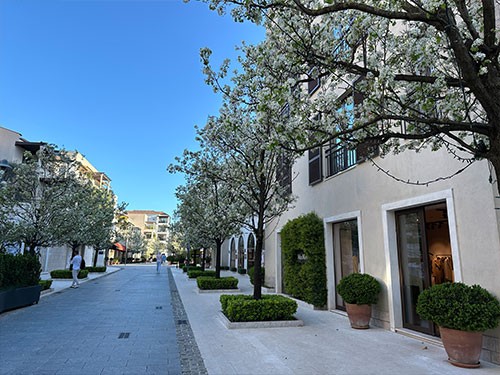
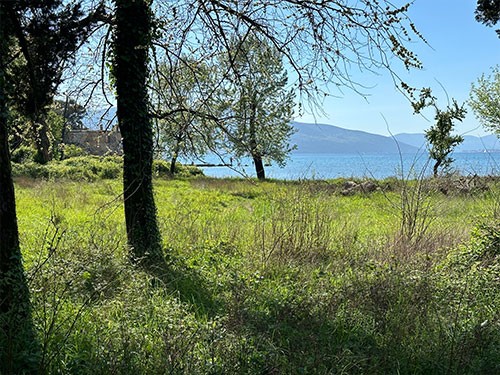
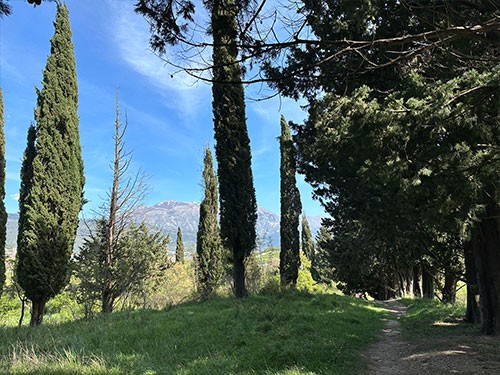
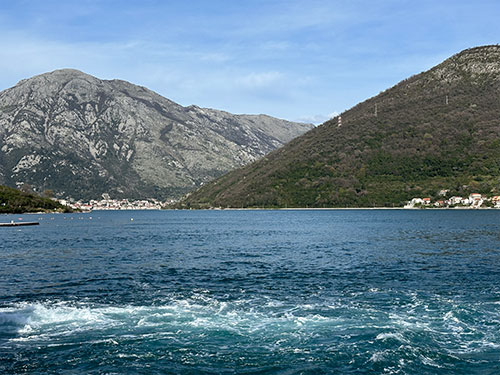
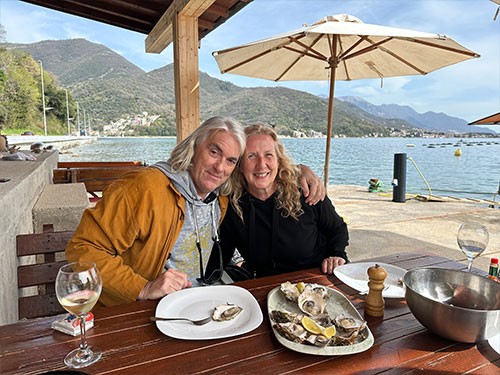
Little pleasures, spring is coming, enjoying fresh fishermen oysters at the waterfront
The art of improvisation
The failure of our aircon heating was particularly mentally unpleasant. With night-time temperatures starting at 5 degrees, it was pretty uncomfortable on board. Fortunately, we met Dragan. He removed the aircon unit and while I was already planning to spend a few nights in a hotel to save our marriage, Dragan brought heat back to the Rivercafe the next day.
It was Dragan who initiated the repairs that we had been dragging around with us since the handover last summer of our technically moderately competent Atlantic Crossing delivery crew refusing to take responsibility. All at our expense, of course, according to AFT.
Now we discovered an upside of Montenegro that was new to us and particularly attractive to sailors: the art of improvisation. An art that some Eastern European countries are said to possess. Dragan dismantled our generator and was convinced that he could bring it back to life without the sinfully expensive (and unavailable) spare parts from Northern Lights in the USA. So we have the chance to revitalize our Gen that will be only expensive instead of indecently expensive. To be continued.

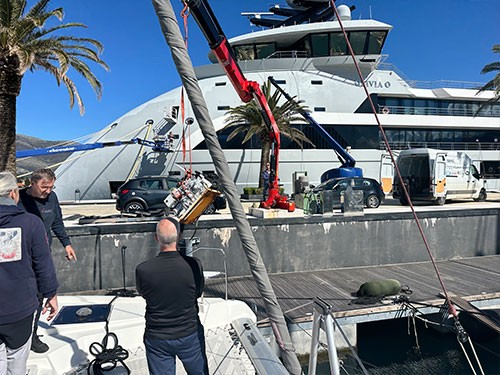
Generator on the crane, in the background the most terrorfying vessel in the World: Olivia O.
Unfortunately, that wasn’t it. Our due engine service revealed that the seal of our portside saildrive (the angled propeller drive under water) was leaking and seawater was found in the oil. This means that the Rivercafe has to go on the hard, as the damage can only be repaired on land. Our plan was actually to manage without shore treatment this year. However its now an opportunity to combine this bad news with the removal of another unpleasant one: after Just Catamarans in Fort Lauderdale gave our underwater hull a fresh coat of paint last June, our hull once again looked like a thriving vegetable patch of seaweed, snails and smallpox. This is clearly not a recommendation for painting with the product Interlux Micron CSC. It turned out to be just lousy stuff. So we took the opportunity to switch back to our old favourite product, which worked much better and lasted longer. (No advertising here).
Construction site Porto Montenegro
We are now waiting for a crane appointment, which has been announced for next week. Only when everything is back on track can we start thinking about Greece. And we want to get there sooner rather than later, because the posh Porto Montenegro has been morphed into a shipyard. Just behind us, 20 metres away, is the 88-metre yacht Olivia O docked, owned by the wealthiest Israeli and billionaire Eyal Ofer. This does not prevent him from being extraordinarily reckless in his behaviour. They have been polishing the ship for months now with the slowest crew in maritime history. With three cranes that they hardly can operate properly, they are ruthlessly terrorizing the other owners and turning the marina into a building site. 7 days a week, even over Easter. A good reason not to return to Porto Montenegro, because a marina should not allow this and they don’t care at all. Especially not with the lavish mooring fees and full capacity.
Speaking of Easter: it didn’t take place here at Easter, but is celebrated in the Orthodox way in May. That’s why the Olivia O was allowed to make a lot of noise for little result at Easter. We will probably make up for our spoilt Easter in May in Greece, which also celebrates Orthodox Easter – but hopefully more peacefully and less noisy.
Croatia: the drama of Dubrovnik
We used the waiting time until the crane appointment the following week to visit Dubrovnik in Croatia. That would only be 35 nm by boat and 70 km by car. But 35 nm can be so far away. Unlike Croatia, Montenegro is not a member of the EU and the bureaucratic effort for permits, customs and immigration is outstanding in both countries. More time-consuming and more expensive than the travelling time. So we got into the car and after 28 kilometres crossed the two border stations with checks and waiting times, as was usual in Europe in the last millennium.
The route is not boring for a minute and leads along the Med sea in large parts. Mountains on the right, the sea on the left – the sun above us. Beautiful. Dubrovnik is a small town with 45,000 inhabitants, but an incredible fortress and old town centre. This makes Dubrovnik a must-see tourist highlight in the Mediterranean. In summer extremely crowded, visitors throng the city like in Venice. But in April it was still ok.
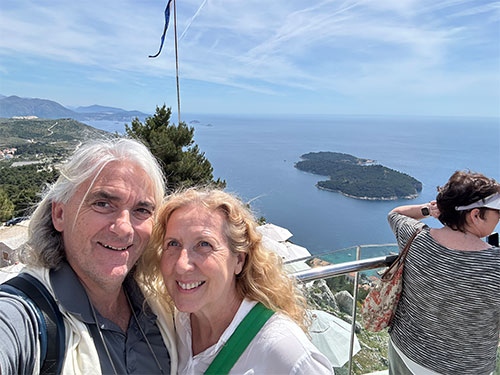
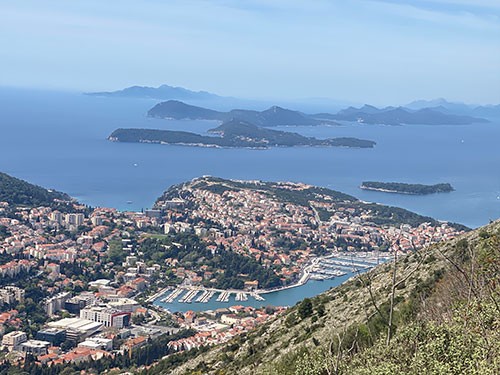
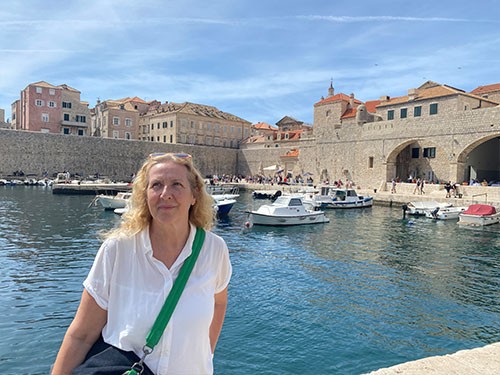
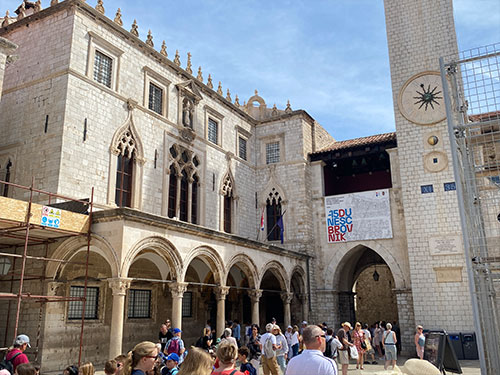
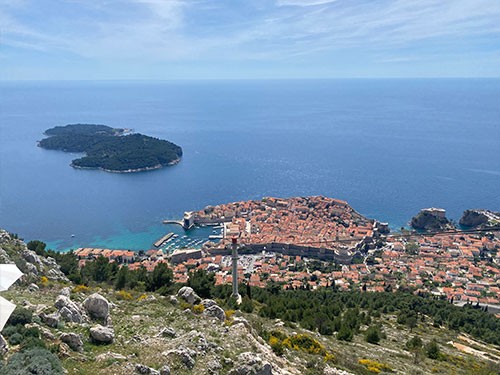
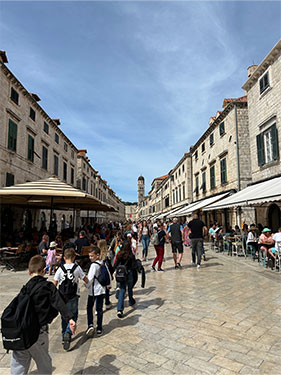
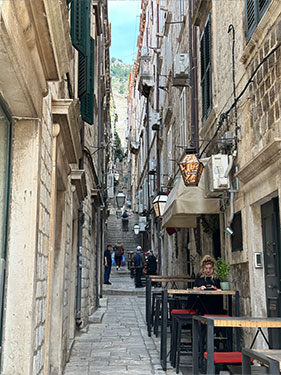
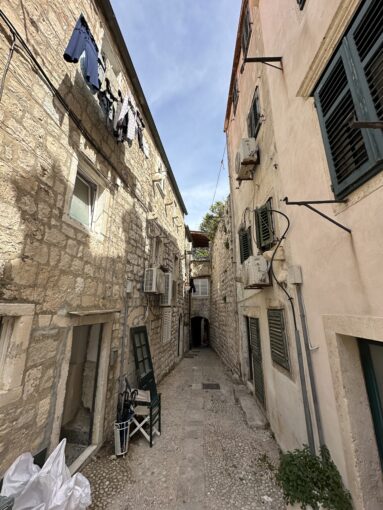
Dubrovnik impressions
Here in the Adriatic region there are many particularly beautiful old towns such as Kotor, Budva or Lecce on the other side of the Adriatic in Italy. But none of them were brutally attacked and senselessly destroyed by the Yugoslav People’s Army 30 years ago. Serbs and Montenegrins attacked Dubrovnik between 1991 and 1992 – a completely demilitarised and unprotected city, mind you. They killed 114 civilians. An exhibition gives a disturbing account of these war crimes and the perpetrators, mainly Serbs, who were sentenced by war crimes tribunals. After 30 years, there are no more traces of the work of these lunatics.. But it remains interesting to see how the peoples of former Yugoslavia get on with each other today.
On the Croatian part of the route, we saw some differences to Montenegro. The Croatian part was much better maintained and less “80s”. We also found the people friendlier – but after such a short time this is only a snapshot, albeit a striking one.
Our next shore excursion will take us to Bosnia-Herzegovina, also just over an hour’s drive away. And then we will hopefully know for sure that everything on Rivercafe is ready for the start of the new season / Holger Binz
